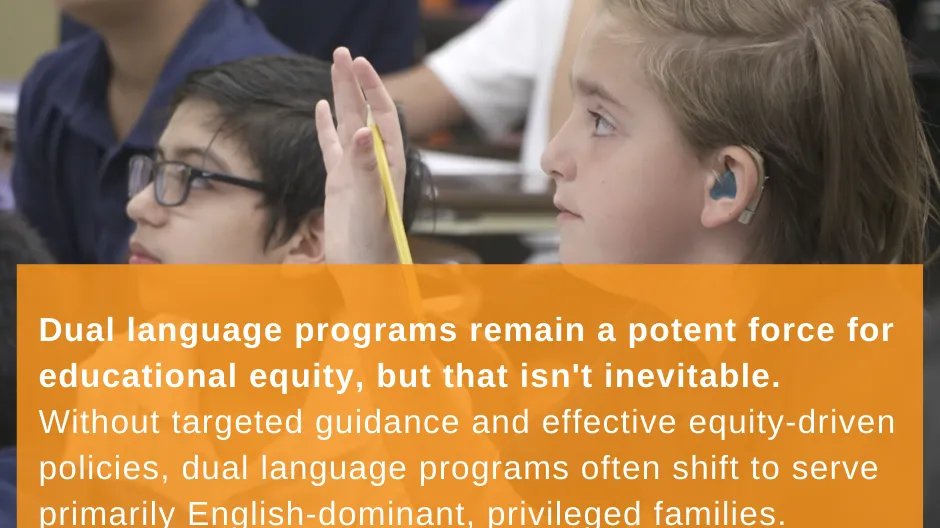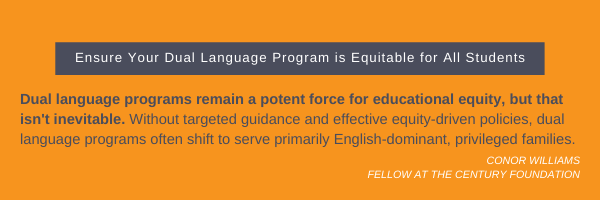Ensure Your Dual Language Program is Equitable for All Students


Ensure Your Dual Language Program is Equitable for All Students
In this edition of our “Where are they now” series, we catch up with our friend Conor Williams, a fellow at The Century Foundation. He is an expert on American educational inequity, English learner students, dual language programs, urban education reform, and the history of progressivism.

Conor joined us in both Seasons 1 and 2 to discuss all things dual language. We caught up with him recently to revisit the topic of dual language programs. Here’s what he had to say…
What's new / what has changed since we last talked?
American politics is crumbling as its foundational norms and institutions collapse. That's driving gridlock in education policy, which is leaving the bulk of US schools operating according to the status quo. Basically: there's not a lot of big thinking about education policy at the federal or state levels, and there's almost no energy pushing new ideas.
What would you like to see happen in the next year around dual language programs?
Dual language programs remain a potent force for educational equity, but that isn't inevitable. Without targeted guidance and effective equity-driven policies, dual language programs often shift to serve primarily English-dominant, privileged families. To that end, it would be exciting to see dual language programs enter into broader education equity discourse—particularly around school integration. How can multilingual school models drive better debates and policies around diversity and equity in public education?
What have you observed since we recorded the last episode that has given you hope or inspiration?
My children attend a school where a majority of students are current or former English learners. It's a profoundly equitable campus that celebrates the cultures and languages of all children in attendance, and that builds effectively on the assets that each student brings to school.
What have you observed since we recorded the last episode that has concerned you?
As I noted above, in most communities, we're largely leaving dual language programs to develop organically. They're generally growing in response to demand from privileged communities who see multilingualism as an enrichment benefit for their children—with little attention to the strengths and needs of linguistically- and culturally-diverse children. While some of us in the field have pointed this out over the years, there's not been any comprehensive or sustained interest from philanthropy or policymakers in doing anything about it.
Where can people go to learn more about dual language programs?
https://www.americancouncils.org/research-assessment/dli-research-alliance
What is a question people aren't asking but should be?
Is your community's proposed dual language immersion school going to be a one-way or a two-way program? If it's going to be a two-way program, how does your community propose to ensure that English-learning students (and native speakers of the non-English partner language) have access? If it's going to be a one-way program for English-dominant children, how does your community propose to serve the English-learning students in your schools? Will you be offering dual language to English-speaking children and English-only to ELs? Is that equitable?
Want more information on dual language programs? Listen to our last conversation with Conor Williams on Highest Aspirations. He is also a regular columnist at the 74 Million. His work has also been published by the New York Times, Atlantic Monthly, Washington Post, The New Republic, Dissent, Commonweal, The Daily Beast, Talking Points Memo, and elsewhere.
Then head over to the EL Community, you're sure to find something that helps you better serve your students.